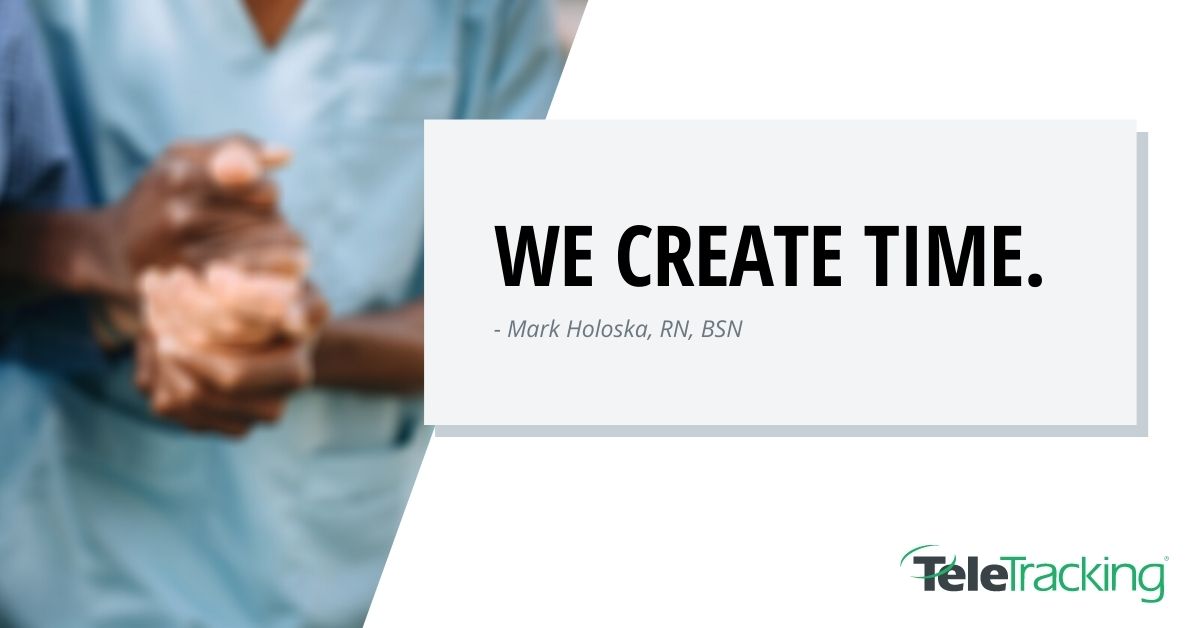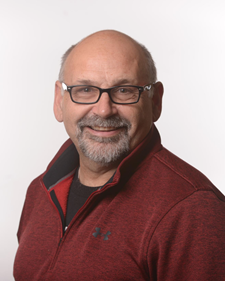The Next Profile in Our Year Long Celebration of the Amazing Accomplishments of Nurses
We started this blog series in January 2020 to recognize the nurses that we have the honor of working with every day―and to support the World Health Organization’s designation of 2020 as the “Year of the Nurse and Midwife.” We always knew that nurses deliver kind, compassionate care to patients in their times of greatest need—they hold the hand of an elderly patient; dry the tears of a frightened child; and comfort grieving family members. With the COVID-19 pandemic, nurses and all healthcare professionals are on the frontlines―continuing to serve, continuing to deliver care and continuing to be there for their communities during the greatest public health crisis in a century. Our sincerest thanks to the nurses who are working hard—under very difficult conditions—to ensure that no one will ever have to wait for the care they need.
Mark Holoska, RN, BSN helps clients deliver the best possible patient care as a Director, Health Systems at TeleTracking. Mark has 34 years of experience in healthcare, including perioperative nursing and healthcare IT. Mark helps enhance outcomes for patients and caregivers by improving and automating processes—combined with technology solutions—that help health systems maximize efficiency. Specifically, Mark’s experience in perioperative care includes work at Level I trauma centers, community hospitals, large teaching institutions and ambulatory surgery centers as a traveling RN—and while serving as a Captain in the U.S. Army.

1. Why did you decide to become a nurse?
Growing up I seemed to always be the one to jump in and help if someone got hurt, but I never thought that it would turn into a career. I was majoring in Biology at SUNY Plattsburgh when they announced that they were taking internal transfers into the nursing program. A friend in the program convinced me to talk to one of the professors, who sparked my interest in perioperative nursing and arranged for me to observe in the operating room. I watched a few total joint replacements and LOVED it!
2. What are the biggest differences you’ve seen in the profession since you started your career?
The impact of automation and technology on patient care. The OR was an early adopter of technology—OR information systems were developed for scheduling, documentation and business management. Yet, outside the OR, automation is a comparatively new concept. I think caregivers are still trying to find the right balance between caring for patients and attending to the requirements of the technologies being introduced.
Another area is the business side of healthcare. I don’t remember taking any business courses in nursing school. Fortunately, I was able to use my GI Bill funds to get an accounting degree and it opened me up to a side of healthcare that I previously hadn’t paid much attention to. And it’s important because nurses are increasingly pushed to understand the financial implications of the care they give.
3. What is the biggest challenge(s) facing nurses today?
Quite simply, they are overwhelmed—too many patients and requirements and not enough time. As I previously mentioned, there is also a business side to healthcare/nursing that they aren’t being well-prepared for in school.
A nurse’s main desire is to be at the bedside helping people—yet they are increasingly being distracted from it. Along with the increasing number of patients they care for, the balancing act becomes quite stressful.
4. What do you think can be done to solve the nursing shortage?
Educate the public on the important role nurses play in a patient’s health. Thanks to TV shows, many people think of nurses working at the bedside or in the ED. The reality is nurses are many things and the profession can take you to so many places. I went from college to the Army, where I was trained in perioperative nursing. When I was discharged, I became a traveling nurse, which allowed me to experience different care settings—Level 1 trauma, rural community hospital, university teaching medical center and many more—and I got to see most of the country while doing it.
The next step in my career was when management moved me to the business side of healthcare. While working in the OR, I was using OR information systems and that took me in a new direction—informatics. That change opened a whole new career path—it led me to be an application trainer and consultant. In those roles, I was paired with software developers, who used my experience and domain expertise to help them design software that operationalized the processes nurses use daily. Some think getting away from the bedside is not nursing—I think it’s just a different kind of nursing. I believe the TeleTracking Clinical Team is impacting the lives of more patients by working with our clients on improving access and efficiency than we ever could as individuals at the bedside.
5. Share a patient story that has impacted you personally.
I worked in the OR for most of my career. Most patients are anxious, but they are asleep soon after they get into the operating room. One that stands out though is an 8-year-old boy who cut his hand playing. The surgeon decided to do the procedure with just a local anesthetic in the OR, with no sedation. This meant no anesthesiologist or certified nurse anesthetist.
Children are a challenge when they are under anesthesia, let alone wide awake. I remember sitting behind the drapes, talking to him for the whole 90 minutes it took to repair his hand. I was hoping to keep him still so the surgeon could work. It ended up he was calm the whole time, didn’t cry or wiggle once! It was a great feeling to know I was able to make what usually is a terrifying experience for a kid, into a good one.
6. The World Health Organization has designated 2020 the International Year of the Nurse and the Midwife. Why is this type of recognition so important?
Often people think nurses care for patients following a doctor’s orders, doing a set of tasks to make them well or as comfortable as possible in the event they can’t be cured—but giving medications or treatments is only a part of the job.
We are educators, trainers, therapists—and most importantly, advocates for the patient and their families! Especially when they can’t help themselves.
7. How does TeleTracking help nurses and other health professionals deliver a better patient experience?
We create time. Our mission is to ensure that no patient will ever have to wait for the care they need—to do that you need somewhere to put them and someone to care for them and we help with both. Reducing the amount of time nurses need to spend on indirect patient care activities gives them more time to spend on direct patient care.
8. How are TeleTracking’s health system command centers helping improve access across the care continuum?
In a single word—visibility. Accessing it is dependent on having the capacity (beds, staff, equipment) to care for the patient’s specific needs. We provide that visibility so that our clients can quickly accept a patient to their healthcare system, place them in the right facility, in the right bed, the first time, to quickly receive the care they need.
More about this blog post
About the Expert
 Mark Holoska, RN, BSN
Mark Holoska, RN, BSN
Director, health systems
Mark Holoska brings more than 13 years of perioperative nursing experience, along with 19 years of success in Healthcare IT to his role as Director, Health Systems. He has played an influential role in improving patient and business outcomes by designing perioperative software solutions that meet the patient care and business needs of healthcare providers. He is also committed to designing new product features, working with customers on creative solutions, and exploring new ways to use people, processes and technology to improve healthcare.
Mark holds bachelor’s degrees in both nursing and accounting from the State University of New York College at Plattsburgh. He also attended the U.S. Army Academy of Health Sciences, focusing on operating room nursing.
We're glad you're enjoying our resources! Please tell us more about you to access our full library.
This will allow us to personalize your experience on TeleTracking.com. Of course, we will never sell your information and you can opt-out at any time. Need help now? Contact a Patient Flow expert.
Leaving the website
You're about to leave this website, to one of our affiliates or another information source.